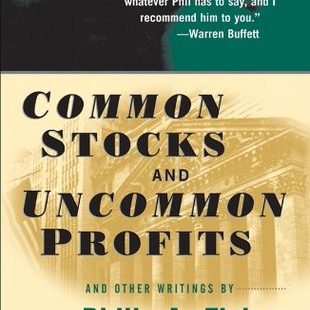Disclosure: I may earn affiliate revenue or commissions if you purchase products from links on my website. The prospect of compensation does not influence what I write about or how my posts are structured. The vast majority of articles on my website do not contain any affiliate links.
Common Stocks and Uncommon Profits and Other Writings by Philip Fisher
Rating: ★★
Date Finished: December 26th, 2017
Reading Time: Three years, shelved for a long time
This book is significant and its author is a legend. However, we’re kidding ourselves if we list this among investing must-reads in 2017. Phil Fisher pioneered an early type of long-term investing where he would pore over financial statements and call employees working every post of the company. You’re wasting your time if you do this today. Back then, such fundamentals weren’t priced in as efficiently as they are in today’s markets, and Phil did well for himself (though nobody knows how well).
How much of it was luck? We’ll never really know. In Common Stocks and Uncommon Profits (and Other Writings) (2nd edition) you’ll trudge through the entirety of Phil’s investing philosophy. He invested through the Great Depression and WWII and came out with some actionable investing advice. His writing style is old-fashioned–certainly in a way that conveys eternal wisdom but not in a way that is conducive to one wanting to continue reading the book. I picked it up in 2014, resumed it last night, finished it today, and the sum of knowledge gained by this rapidly-aging pedant has been zero.
Of particular interest was the idea in the mid-50s that “The very rich and the very poor each year grow smaller in number.” I’m assuming this was true at the time of writing, but at some point became perpetually untrue. Phil Fisher doesn’t cast a wide net of predictions, but one thing that impressed me was that his understanding of the future of semiconductors seemed to be ahead of its time (and correct). Part of me wished he could have predicted the consolidation of wealth and erosion of the middle class that was fueled largely by semiconductor technology, but that type of foresight would have been godly.
He seems to be highly suspicious of diversification. He admits to practicing it but doesn’t have a well-rounded approach. The benefits of diversification weren’t published until the late sixties, if memory serves me correctly. While Phil gets a free pass, this book is dangerous to the uninitiated due to outdated advice such as what’s contained here. For this reason, you should choose a modern book like A Random Walk Down Wall Street and avoid classics regardless of what Warren Buffet tells you to do.
See this review and others on Goodreads.com



